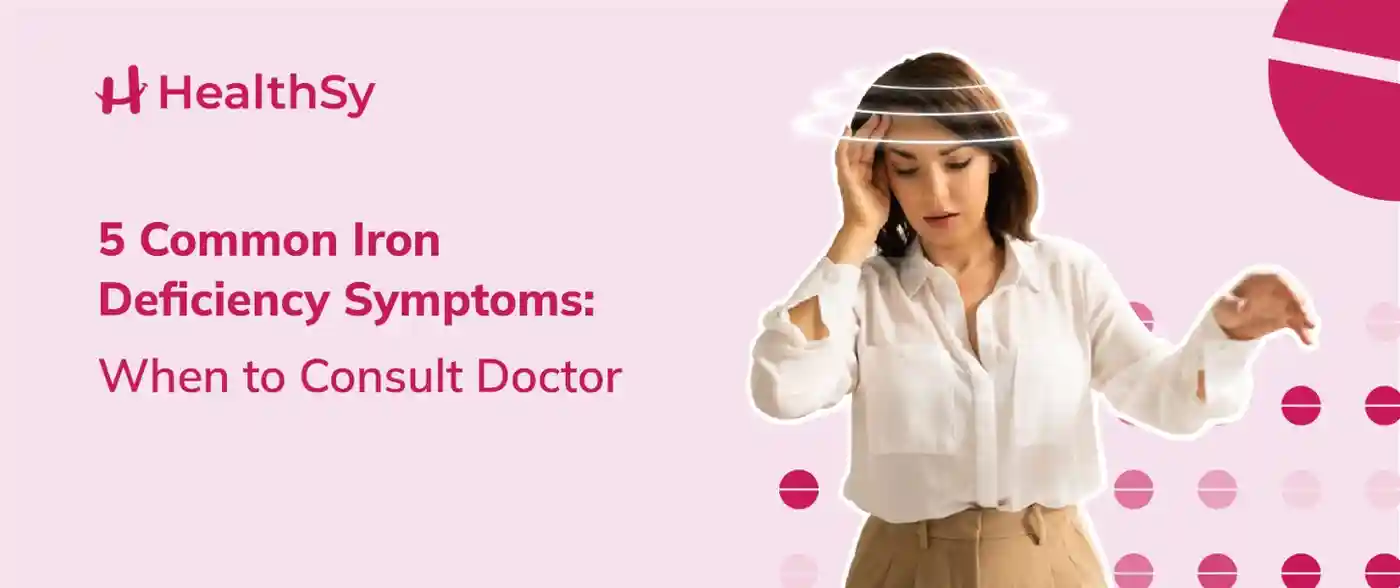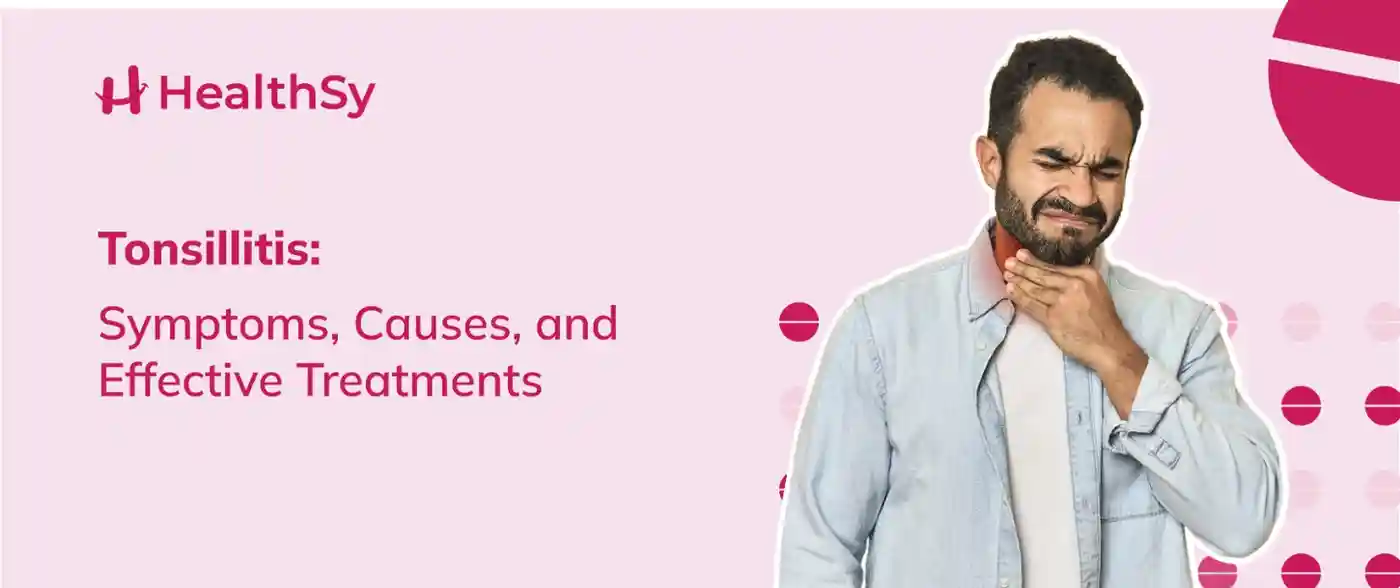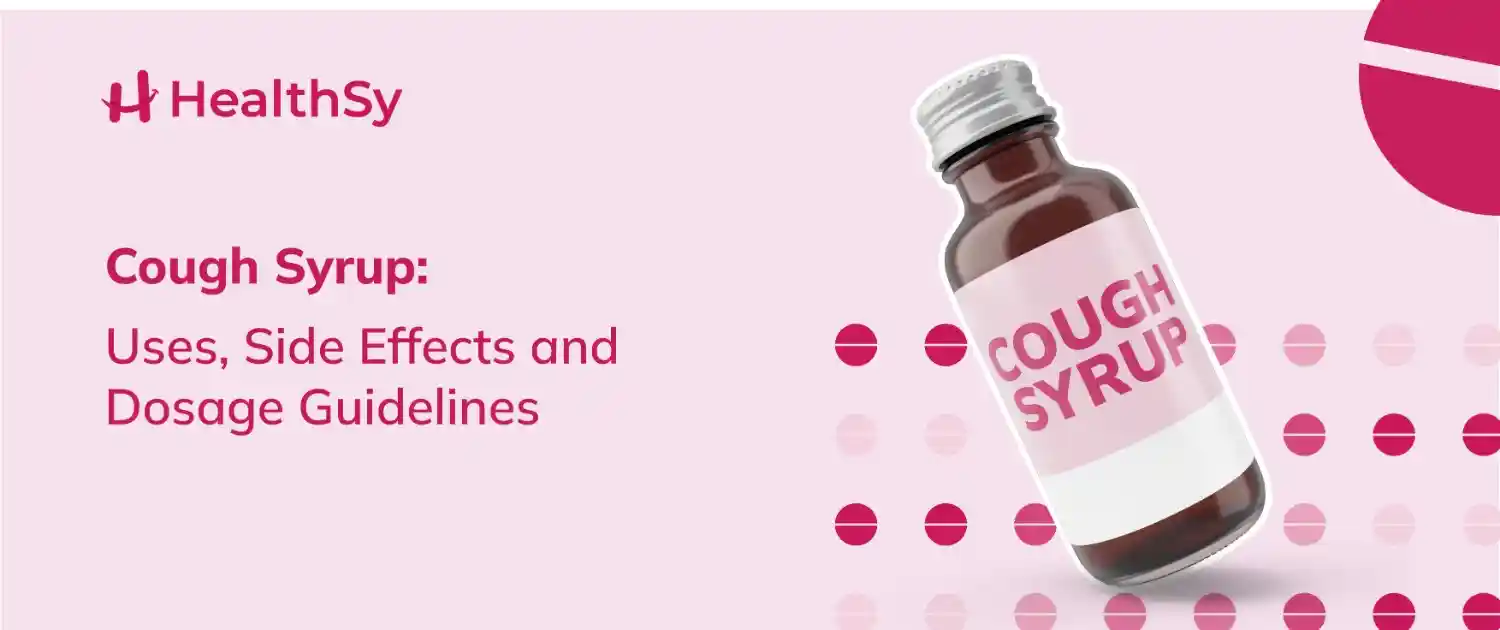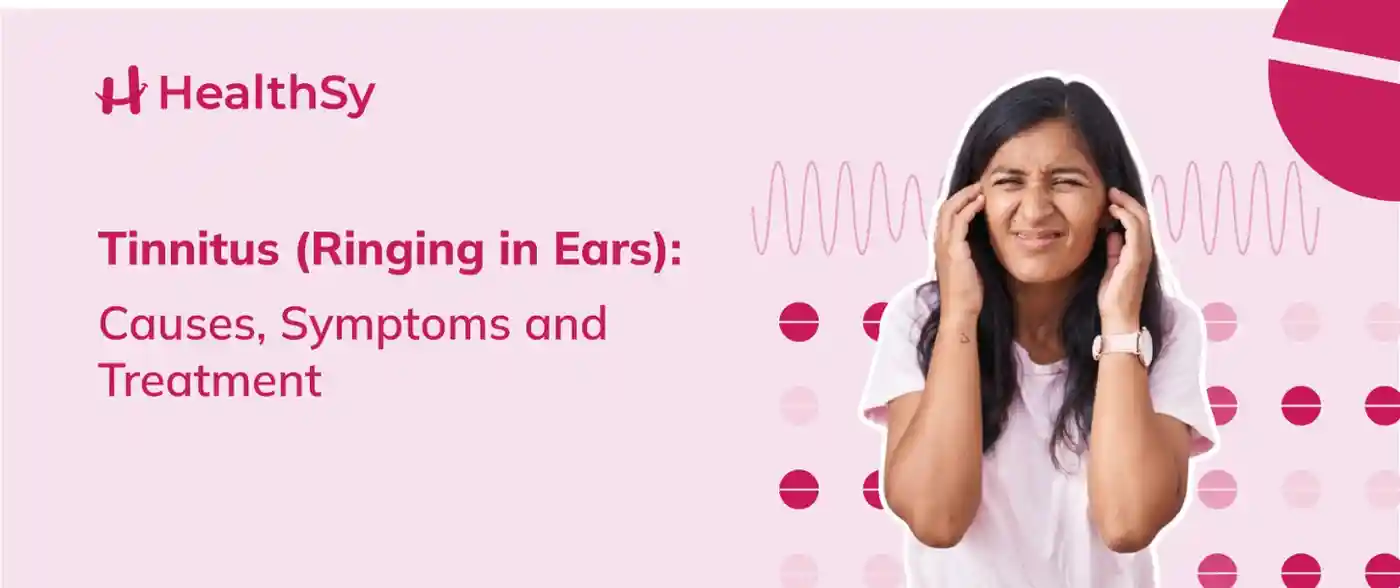5 Common Iron Deficiency Symptoms: When to Consult Doctor

Are you craving non-food items like ice cubes, clay, chalk, or paper? Then you should know why you are having those cravings.
Having low iron may trigger the craving to eat or chew ice cubes, clay, chalk, or paper. Research shows that the craving to eat ice cubes affects nearly 25 percent of people with iron deficiency.
Iron is an essential mineral for the growth and development of the body. It helps to carry oxygen in the blood to carry throughout the body. When the iron is low in your body, you may experience fatigue, weakness, and some serious complications. Iron is an essential mineral for the body’s growth and development, as it helps transport oxygen in the blood. When iron levels are low, symptoms like fatigue, weakness, and even serious complications can arise. Therefore, recognizing iron deficiency symptoms early can help prevent further health issues.
Iron Deficiency Symptoms
1. Fatigue and Weakness
People with low iron deficiency easily get tired; for example, they may experience fatigue even after completing simple tasks like walking up a flight of stairs. Also, it is difficult to get up in the morning even if they have a good night's sleep. This can significantly impact their quality of life and ability to participate in daily activities.
2. Pale or Yellowish Skin
Pale or yellowish skin clearly shows the lack of iron in the body, as iron is essential for healthy blood circulation and oxygen transport. This can be easily noticeable in areas with less pigmentation, such as the face, lips, and nails. Including iron-rich foods can help to improve the iron levels in the body and alleviate these symptoms. If you are not able to get directly from the food items, you may consider taking iron supplements.
3. Headaches
If the iron levels are low in your body often, you get headaches. This is because iron deficiency can lead to reduced oxygen flow to the brain, causing headaches and even migraines. If the headache is persistent and severe, it is important to consult with a doctor. Persistent and severe headaches can be a sign of a more serious underlying condition.
4. Odd Cravings
It is very common for people with low iron to eat non-food items like ice, dirt, or paper. This condition is known as pica and can be a sign of iron deficiency anaemia. Craving for non-food items also leads to gastrointestinal issues such as stomach pain or constipation.
5. Dry Skin, Hair and Brittle Nails
Dry skin and hair are visible and a major symptom of iron deficiency. When the oxygen flow to the skin and hair follicles is reduced due to low iron levels, it can result in dryness and brittleness. In addition, this can also lead to hair loss and slow growth.
When to consult a doctor?
The symptoms of iron deficiency may differ from person to person. If you are experiencing persistent fatigue, weakness, and shortness of breath in addition to dry skin and hair, it is recommended to consult with a healthcare professional for proper diagnosis and treatment. Ignoring these symptoms can lead to further complications and negatively impact your overall health.

We have all felt a cramp that
comes out of nowhere, a twist in the gut, a belly bloating after full meals,
and a dull pain that never goes away. Stomach Pain! Yes. At some point almost
everybody would have experienced stomach pain in their entire lives. Whether it’s
a cramp or a dull ache in the abdominal area, the discomfort that you feel will be
heavy. It can significantly affect your routine day. At times, the stomach can be due to some digestive issues, periods, cramps, etc. It is important that you get the attention of a medical professional if your stomach pain is unbearable.
Never self-medicate. Instead, you can try a few home remedies that don’t harm you in any way. They might soothe your pain and ease your discomfort. In this article, let us learn a few efficient home remedies for stomach pain.
1: Sip on Herbal Teas or Warm Water
One of the best ways to reduce and soothe stomach aches is by drinking more water and herbal teas. Warm water can help relax the abdominal muscles and improve digestion. Herbal teas like chamomile, ginger, or peppermint are particularly beneficial. Ginger tea is known for its anti-inflammatory and anti-nausea properties. Peppermint helps relieve bloating and gas, making it ideal for general discomfort or pain in the lower abs caused by indigestion.
2. Apply a Heating Pad
Heat therapy is an age-old remedy that’s still effective today. Placing a heating pad or hot water bottle on your abdomen can relax the muscles and improve blood flow, reducing cramping or tension. This is especially useful for menstrual cramps or gas-related discomfort.
Tip: Always wrap the heating pad in a cloth to avoid burning your skin, and limit use to 15-20 minutes at a time.
3. Follow the BRAT Diet
When you're dealing with nausea, diarrhea, or general digestive upset, the BRAT diet (Bananas, Rice, Applesauce, Toast) is a gentle way to keep your stomach calm while providing some nutrition. These bland, low-fiber foods help firm up stools and don’t irritate the stomach lining, making them excellent for recovery.
Avoid spicy, fatty, or dairy-rich foods during this period, as they can worsen symptoms.
4. Try Natural Antacids
For those suffering from acid reflux or heartburn, which can cause upper abdominal discomfort, a natural antacid might help. Baking soda (sodium bicarbonate) mixed with water can temporarily neutralize stomach acid. However, this is a short-term solution and should not replace prescribed stomach pain medicine.
Another option is chewing on a few basil leaves or drinking aloe vera juice—both are known for their stomach-soothing properties.
5. Practice Gentle Movement or Yoga
If you're experiencing bloating or gas that leads to pain in lower abs, light movement can help relieve the discomfort. Yoga poses like "Child’s Pose", "Knees-to-Chest", or "Supine Twist" can help stimulate digestion and reduce trapped gas. Walking for just 10-15 minutes can also help get things moving through your digestive system.
6. Use Apple Cider Vinegar (ACV)
While ACV might not be ideal for all types of stomach pain, it can be effective for indigestion. A tablespoon of apple cider vinegar mixed in warm water, taken before meals, may help regulate stomach acid levels. Be sure to drink it through a straw to protect your teeth, and always dilute it properly.
7. Hydrate and Rest
Sometimes, the best remedy is simply giving your body time to heal. Dehydration can make stomach symptoms worse, so sipping fluids throughout the day is key. Avoid caffeine and alcohol, and get plenty of rest. A relaxed body often leads to a calm gut.
Which doctor to consult for Stomach Pain?
While there are so many home remedies for stomach pain, they may help in mild cases. At times it is crucial to consult your doctor and get your symptoms checked to know if it is a common stomach pain or something that must be concerned about. Mostly, in case of stomach pain, you can consult a general physician or a gastroenterologist.
When to see a doctor?
Consult a doctor if you experience:
- Severe or persistent pain
- High fever
- Vomiting blood or black stools
- Sudden and sharp pain in lower abs
- Inability to keep food or fluids down
- Pain that lasts more than a few days
These could be signs of a more serious condition like appendicitis, ulcers, gallstones, or gastrointestinal infections.
Final Takeaway
Home remedies basically are a great way to manage stomach pain and digestive discomforts. Just following a few simple things will help. For instance, having herbal teas, warm compress, and dietary changes will offer significant relief. Also, do not hesitate to consult your doctor if the symptoms persist or worsens. In a few cases, getting diagnosed professionally with proper medications will help fast recovery.

Tonsillitis is one of the most common ENT problems, especially among children and teenagers. In fact, many people experience it at least once in their lifetime. However, it can be difficult to differentiate between tonsillitis and other throat infections like strep throat, as the symptoms often overlap. If throat pain becomes persistent and starts interfering with daily activities, it is important to consult an ENT specialist. In this article, we will explore what tonsillitis is, along with its symptoms, causes, and available treatment options.
What is Tonsillitis?
Tonsils are small, oval-shaped pads located at the back of your throat. They are part of the immune system and help to defend against the bacteria and viruses that enter your mouth. When an infection develops in the tonsils, it becomes inflamed or swollen, and this condition is called tonsillitis.
Tonsillitis can occur in two forms:
- Acute: Generally, lasts for a short period of time, caused by viral or bacterial infections
- Chronic: This may last for an extended period of time; individuals may experience multiple episodes of acute tonsillitis. experienced multiple episodes of acute tonsillitis.
Symptoms of Tonsillitis
People who suffer from tonsillitis experience the following symptoms depending on the severity of the infection. This includes:
· Sore throat
· Fever
· Fatigue
· Bad breath
· Headache
· Difficulty swallowing
· Swollen and red tonsils
· Voice changes or hoarseness
· Swollen lymph nodes in the neck
· White or yellow coating on the tonsils
Causes of Tonsillitis
Tonsils are vulnerable to infections, even though a part of the immune system. When tonsils are infected by bacteria or viruses, it causes discomfort in the throat.
· Viruses such as Epstein-Barr Virus (EBV), Adenovirus can cause tonsillitis.
· Group A Streptococcus (GAS), Staphylococcus aureus are the most common bacteria that cause tonsillitis.
Other causes of tonsillitis are,
Second-hand smoke
Environmental pollutants
- Age
- Allergies
- A weakened immune system
Diagnose of Tonsillitis
To identify tonsillitis, the healthcare provider takes the following steps to provide treatment.
Medical History: The ENT doctor evaluates the symptoms and their duration, and the recurrent history of throat infections.
In some cases, the ENT doctor might ask for some tests to identify tonsillitis. This test includes a throat swab, blood tests.
After identifying tonsillitis, the doctor provides appropriate treatment based on the severity of the tonsillitis.
Tonsillitis Treatment
Tonsillitis treatment is completely based on the cause. If it is by viral infection, the doctor may suggest taking proper rest, providing an Over-the-counter pain reliever, and a humidifier.
If tonsillitis is caused by bacterial infection, particularly Group A Streptococcus, doctors commonly prescribe antibiotics such as penicillin or amoxicillin, and it is crucial to complete the full course of medication even if the symptoms begin to improve earlier.
In some severe and recurring cases, the doctor may suggest tonsillectomy, a procedure to surgically remove your tonsils.
Who is at Risk of Tonsillitis?
- Tonsillitis can affect people of all ages, but it is most common in children and adults.
- People who are exposed to irritants like smoke or pollution develop tonsillitis.
How to prevent Tonsillitis?
People can reduce the chance of developing tonsillitis. Here are some tips that help to reduce tonsillitis:
- Regular Hand Wash: Maintaining hand hygiene is essential in preventing tonsillitis.
- Cover Mouth and Nose: Respiratory droplets can also spread the virus; always cover your mouth and nose while sneezing or coughing.
- Dental Hygiene: Practicing good oral hygiene can reduce the risk. Try to replace your toothbrush at least once in three months.
- Manage Allergies: Addressing and managing allergies can contribute to throat irritation and inflammation.
- Prompt Attention: If a sore throat develops, especially if it persists or is accompanied by other symptoms, it is important to consult an ENT doctor for proper treatment.
In conclusion, tonsillitis is a common condition;
understanding the symptoms, causes, and treatment options is essential for timely
and effective intervention. You cannot completely prevent tonsillitis, but you
can reduce the risk by following proper hygiene practices. If you suspect or
your throat pain becomes severe, do not hesitate to consult an ENT doctor to
prevent complications.

Famous for their speckled flesh and vibrant pink skin, dragon fruits, also called pitaya fruits, are an excellent tropical delight globally. These pitaya fruits have endless health benefits, more than just being a good-looking fruit inside. It is a powerhouse of antioxidants, nutrients, and hydration. So, does this pitaya fruit have side effects, too? Let’s check out.
This article explains dragon fruit, also known as pitaya fruit, its benefits, side effects, and more.
What is Pitaya Fruit or Dragon Fruit?
Pitaya fruits, commonly known as dragon fruit, are basically from a cactus species native to Central America. But today, it is a very well-known fruit throughout the Asian continent, the Caribbean, and Australia. The fruit is consumed in two common types: white-fleshed and red-fleshed; both contain black seeds. This pitaya or dragon fruit has numerous health benefits regardless of the type. Now, are you ready to get to know them in detail?
Dragon Fruit or Pitaya Fruit Benefits
The following are a few proven health benefits of dragon or pitaya fruit. Keep reading!
- Boosts immunity
- Hydrates your body
- Improves gut health
- Promotes healthy skin
- Supports digestion
- Enhances iron levels
- Regulates blood sugar
- Improves heart health
- Helps in weight management
- Reduces inflammation
- Fights anaemia
- Increases your energy level
- Improves body metabolism
- Strengthens bones
- An excellent choice for pregnant women
- Aids liver function
- Improves Eye Health
With so many health benefits, dragon fruit is a magical delight everyone should include in
their healthy diet. This is the primary reason for the prominence of the pitaya
fruit’s health globally.
Possible Dragon Fruit or Pitaya Fruit Side Effects to Know!
While dragon fruit's health benefits are impressive, there are a few mild and rare side effects to consider, mainly if you are a first-time dragon or pitaya fruit consumer.
- Watch out for allergic reactions. After having dragon fruit for the first time, some might experience itching, swelling, and hives.
- If you are a person who has low BP already, then eating pitaya might lower it further.
- Eating too much pitaya or dragon fruit can sometimes cause diarrhea since it is more fiber-containing.
- The high pigments in dragon fruit can temporarily transform the colour of your stool or urine.
- In drug interactions, some compounds in the fruit can interact with medicines. So, consult your doctor immediately if you face any weird symptoms.
Despite these dragon fruit side
effects, they are generally rare. Most people enjoy the benefits of dragon
fruit without any adverse outcomes.
How to Eat Dragon Fruit or Pitaya Fruit?
Dragon fruit or pitaya fruit can be consumed in various forms. You can add it to salads, toasts, pancakes, salsa, desserts, and ice creams, make smoothies, or scoop it and eat it raw. In any form, it is crucial to have it often.
Final Takeaway
From improving digestion to boosting your immune system and skin health, the benefits of dragon fruit are truly commendable. Including it in your daily routine is an excellent addition to your health. This nutrient-rich and vibrant pitaya fruit is a delicious way to support your wellness naturally. With all these benefits, it is also crucial to consider its rare side effects to enjoy this tropical delight responsibly. So, enjoy dragon fruit based on your taste and preferences.

Cough Syrup is a ubiquitous OTC or prescription medicine that relieves cough caused by colds, flu, allergies, and other respiratory conditions. As it provides the best relief, knowing its uses, side effects, and dosage information is essential, particularly while giving it to kids. In this article, we will learn a few things about cough syrup for kids and cough syrup for adults in detail.
Cough Syrup Types
Cough syrups are broadly classified under two categories:
- Suppressants (Antitussives): This cough syrup helps reduce the coughing sensation and is highly recommended for non-productive and dry coughs. A few examples of this type of syrup include dextromethorphan-based syrups.
- Expectorants: Expectorants are used to loosen mucus and expel them quickly. Guaifenesin is a very common expectorant found in cough syrups.
Along with these two, a few syrups contain both expectorant and suppressant properties to provide comprehensive relief.
Cough Syrup for Kids
Compared to adults, children are more prone to coughs due to allergies and infections. However, not all cough syrups are undoubtedly safe for children. Cough syrups for kids are compounded with minimal dosage and active ingredients containing natural extracts like ivy leaves and honey.
Cough Syrup for Kids: Dosage Guidelines
- Cough syrups should only be given to children above the age of 4 unless prescribed by a doctor.
- Always measure the dose using a calibrated dropper or syringe provided with the medicine.
- Avoid syrups with codeine or potent sedatives, as they can be harmful to young children.
- Consult a pediatrician before giving OTC cough syrup to children under 6 years old.
Cough Syrup for Adults
Cough syrups for adults contain more active ingredients and may include additional components such as antihistamines (for allergies) or decongestants (for nasal congestion).
Dosage Guidelines for Adults
- Always follow the dosage as the doctor directs or as mentioned on the label.
- Never mix the cough syrup with other sedatives or alcohol, as it may cause severe drowsiness and side effects.
- No one has cough syrups and operates heavy machinery, which may cause risks.
Common Side Effects of Cough Syrup
While cough syrups are generally safe when used correctly, they can cause side effects in some individuals. Common side effects include:
- Drowsiness and dizziness (common in suppressants)
- Nausea or vomiting
- Dry mouth or throat irritation
- Allergic reactions (rash, swelling, or difficulty breathing in rare cases)
- Increased heart rate (for syrups containing decongestants)
If any severe reactions occur, discontinue use and seek medical attention immediately.
Cough Syrup Precautions
- Check Ingredients: Always read the label to ensure the cough syrup contains no substances you are allergic to.
- Avoid Overuse: Prolonged use or exceeding the recommended dose can lead to dependency or adverse effects.
- Consult a doctor: If a cough persists for more than two weeks, consult a healthcare professional, as it may indicate an underlying condition.
- Storage: Keep cough syrups out of reach of children and store them at the recommended temperature to maintain efficacy.
Final Takeaway
When used correctly, cough syrup is one of the best ways to relieve cough and other discomfort associated with it. However, choosing the proper syrup—whether for kids or adults—and following dosage guidelines and precautions is crucial to ensuring safe usage. Always consult a doctor if symptoms persist or worsen despite medication. Using cough syrup responsibly allows you to manage your cough effectively without unnecessary risks.

Tinnitus, commonly called ringing in the ears, is an illness that affects many people globally. For some, it is a very minor inconvenience, while for others, it affects the quality of their lives. Understanding the causes, symptoms, and available tinnitus treatment options is essential for managing this condition effectively.
What is Tinnitus?
Tinnitus is a perception of noise or ringing in the ears with no external sound. It could manifest as a hissing, clicking, buzzing, or whistling sound. The frequency and severity of tinnitus vary from person to person. While it is not a disease, it often signals an underlying issue that requires attention and proper tinnitus treatment.
Tinnitus Causes
Tinnitus can result from various factors, including:
- Hearing Loss: One of the most common causes of tinnitus is age-related hearing loss. The tiny hair cells in the inner ear get damaged over time, leading to hearing impairment and triggering tinnitus.
- Exposure to Loud Noise: Frequent exposure to loud sounds, such as concerts, construction sites, or personal audio devices at high volume, can lead to noise-induced hearing loss, resulting in tinnitus.
- Earwax Buildup: An excessive earwax buildup can block the ear canal, causing irritation and triggering tinnitus symptoms.
- Ear Infections and Blockages: Ear infections, fluid buildup, or foreign objects lodged in the ear can contribute to tinnitus. Proper medical evaluation and tinnitus treatment are essential in such cases.
- Medications: Certain medications, such as antibiotics, diuretics, and high doses of aspirin, can cause tinnitus as a side effect. If you suspect medication-induced tinnitus, consult a doctor for alternative options.
- Medical Conditions: Underlying health conditions like Meniere’s disease, high blood pressure, cardiovascular diseases, and diabetes can also be linked to tinnitus. Proper diagnosis is crucial for effective tinnitus treatment.
Tinnitus Symptoms
The primary symptom of tinnitus is hearing an internal sound that others cannot hear. The sound can be:
- Continuous or intermittent
- High-pitched or low-pitched
- Present in one or both ears
- Accompanied by hearing loss or dizziness
In severe cases, tinnitus can interfere with concentration, sleep, and daily activities, making tinnitus treatment necessary.
Tinnitus Treatment Options
Even though there is no cure for tinnitus, several options will help treat the condition. The following are a few common approaches to managing tinnitus:
- Hearing Aids
- Sound Therapy
- Cognitive behavioral therapy
- Lifestyle changes
- Medicines and supplements
- Tinnitus retraining therapy
- Home remedies
When to Consult a Doctor?
If the tinnitus condition remains or worsens, accompanied by symptoms like hearing loss, dizziness, or pain, consult your doctor immediately. An ENT specialist or audiologist can quickly diagnose and help get tinnitus treated effectively.
Final Takeaways
Tinnitus can be irritating and disruptive, but it can be easily managed with the proper treatment approach. From sound therapies and lifestyle changes to medical treatments, there are many options to recover from it. If you or someone you know is struggling with tinnitus, the best action is to consult a healthcare professional for a personalized treatment plan.

Post A Comment